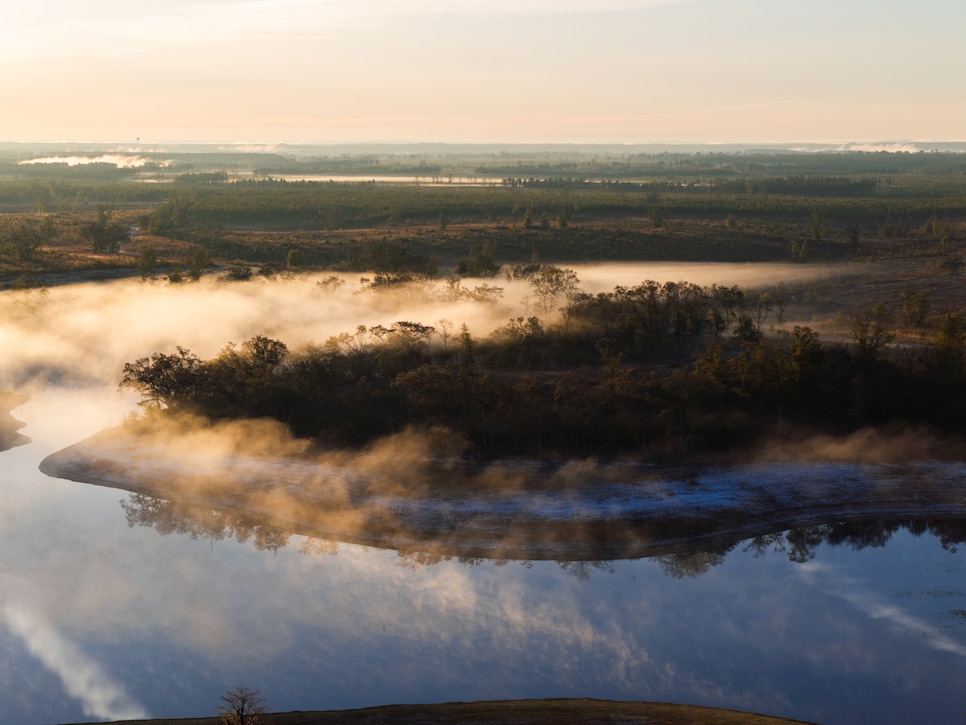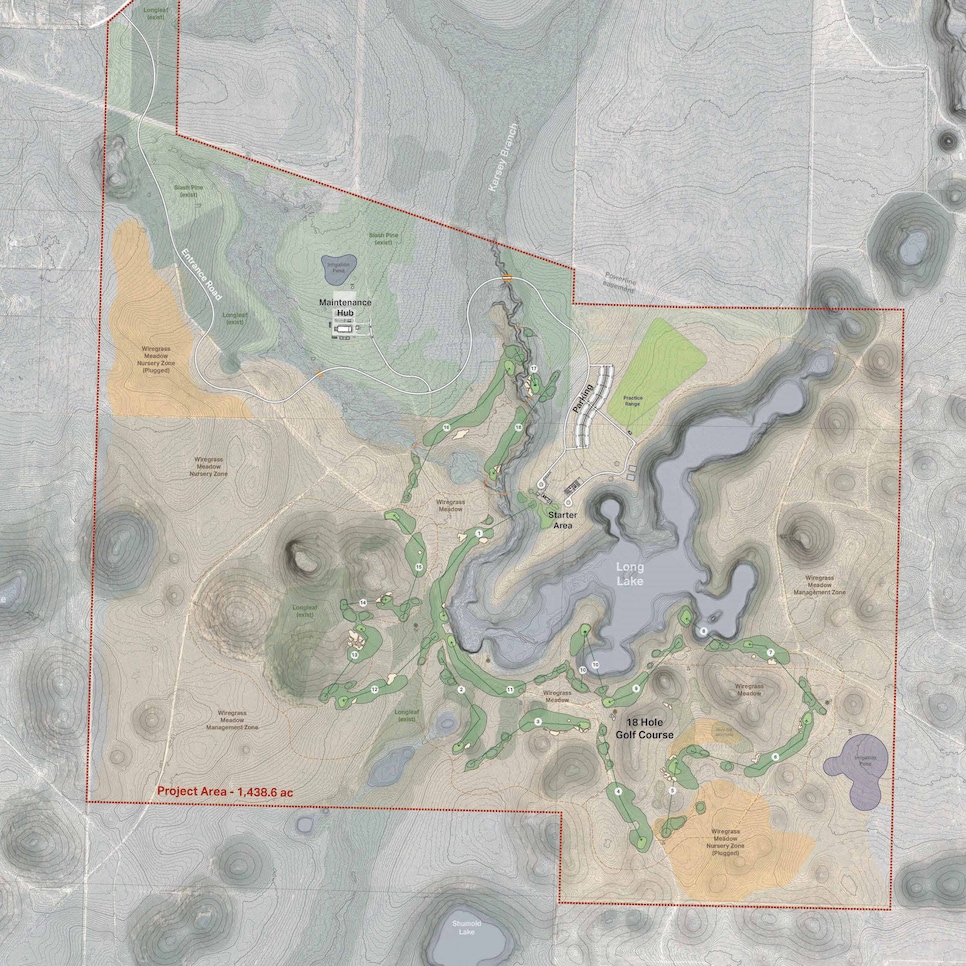‘Sand Valley on steroids’: Bandon’s founders discuss why they’re excited about their new project in Florida – Australian Golf Digest

- by Admin
- November 7, 2024

The prevailing wisdom of golf development in the U.S. has always been to build the courses where the golfers are. First this meant in or adjacent to the towns and cities; then in the suburbs and exurbs; and finally at the beaches, lakes and mountains where people were already traveling.
That paradigm changed with the opening of Sand Hills Golf Club in the remote sand hills of Nebraska in 1995, and four years later, Bandon Dunes on Oregon’s southern coast. These courses proved that golf could thrive in places far away from cities and popular destinations—as long as the land, setting and playing fields made it worth a special voyage.
Over the last decade, Dream Golf, the upscale golf development company led by Michael and Chris Keiser, sons of Bandon Dunes developer Mike Keiser, have made an art out of the “if you build it, they will come” philosophy.
The Keiser sons first created Sand Valley in the rural center of Wisconsin, hardly a place anyone would have considered synonymous with golf, after they became aware of several thousand acres of large, pine-covered sand dunes that no one was paying any attention to. Golfers from around the world now trek to the resort to play its five courses.
Dream Golf is currently in the midst of a major expansion. Rodeo Dunes in Colorado, a 36-hole public facility roaming a large stretch of sand dunes an hour northeast of Denver, is currently under construction with its first Bill Coore and Ben Crenshaw course (longtime Coore and Crenshaw associate Jim Craig is designing the second course). Another 36-hole public-access destination, Wild Spring Dunes, 90-minutes east of both Dallas and Houston near Nacogdoches, is also underway, with Tom Doak designing the first course.
Dream Golf is announcing its next development, Old Shores, an 18-hole public-access development in northwest Florida, to be designed by Doak. The 1,400-acre site is near the small town of New Hope in Washington County, 30 miles north of Panama City Beach. Like other Dream Golf projects, there’s very little population or infrastructure nearby, but the site was chosen for its outstanding golf potential, not its proximity to markets. The primary draw, aside from avid Dream Golf aficionados, will be the upscale beach communities of Highway 30A an hour drive away.
Dream Golf
Michael Keiser has become a specialist in scouting the kinds of overlooked properties that possess the right combination of attributes to make Bandon and Sand Valley-level golf, and he’s likely spent more time than any other developer, possibly in history, visiting and researching remote pieces of land. The Old Shores site is among the best he’s encountered (the name reflects the fact that the area once bordered the ocean—the entire state is essentially a giant sand bar, and at different times throughout the Earth’s history its land has been submerged in water).
“First off, the site is beautiful. It’s gorgeous,” Keiser told Golf Digest. “At Dream Golf we look for great topography and sand, but beauty is also a part of it. We also look for uniqueness. My search here actually started in Georgia, and I kept finding good sites, but then there’d be another really good site next to it, and it kind of led me down into north Florida.”
Aside from sandy soils and 20- to 30-foot surface elevation changes, the most unique aspect of the property is the presence of karst depressions—essentially giant sink holes, sometimes filled with water, sometimes not—that can plunge to depths of 80 feet of more.
“Geologically, everything growing on the site is unique and not really found anywhere else in the country, at least not Florida,” Keiser says. “The topography was also interesting. The land that Tom and I chose for the course has a tremendous amount of variety throughout the routing and the huge depressions create very steep, dramatic golf features that you play alongside, and others are smaller and you play through them.”

The site is part of a vast 55,000-acre family-owned property known as the Knight Tract, named for a family that originally owned it (Dream Golf acquired approximately 4,000 acres of it in total). Because it was privately owned for generations, the various ecosystems have not fully been studied but are believed to be among the rarest and most bio-diverse in the country consisting of over 50 of the karst lake depressions and ponds, sphagnum bogs, bottomland hardwood and cypress swamps and other wetlands, steephead ravines, slope forests, sand dunes and significant concentrations of vital regional plants and trees.
Like Sand Valley, portions of the land was formerly used for agricultural timber. Other areas were prairie and ranch—in fact, bison once roamed across it.
The parts used for golf possess the un-Florida-like elevation changes, existing lakes, open prairie, white-sand dunes, and importantly, the karst depressions that will be used as strategic, risk-reward hazards similar to oceanside cliff holes like the 16th at Cypress Point.
“I sometimes reference the property as Sand Valley on steroids,” Keiser says. “It’s a similarly beautiful timber site but the sand is whiter, the green colors are sharper, the lakes are natural—it’s everything you love about Sand Valley but a couple of points higher in each of those categories.”
The Keiser family have revolutionized how resort and public golf is done, having built some of the most acclaimed new courses in the world over the last 25 years (Mike Keiser is also a partner of the Cabot Collection, owner of Cabot Cape Breton and other Cabot brands, and was involved in the development of Barnbougle Dunes in Tasmania), and the key is selecting sensation sites like Old Shores that no other investor would think to turn into golf.
The other key is to build multiple courses: one course is a curiosity, they say, two is a destination. Old Shores, however, is currently being permitted for just one course. Keiser says that when working with certain regulators it’s important to get the first one off the ground before thinking bigger.
“We want to be very disciplined about completing step one, and that’s to get this development approved for one golf course,” he says. “That’s the only thing we’re asking for, and if that’s all that’s ever approved, we’ll be thrilled to be in this area. We think (one golf course) can be sustainable. If that goes well, we might say, ‘what’s next?’ But right now, we’re focused on getting one golf course built.”
Environmental permits are still pending, and there is no set timeline for construction. The hope is that once the paperwork is in place, shaping and grassing will happen quickly.
When Old Shores does eventually open for play, it will have aspects unlike almost any other course in Florida given the unique characteristics of the site. It will also be a groundbreaking addition to an immensely popular place to visit, but one lacking in golf star power. Between Old Shores and the new Davis Love III new course at WaterSound Club, that’s about to change.
This article was originally published on golfdigest.com
The Latest News
-
December 24, 2024North Lamar Australian Basketball
-
December 24, 2024We asked Golf Digest writers the story they were proudest of in 2024, and why – Australian Golf Digest
-
December 24, 2024Blueprint for success: how Australian architects made the world take notice in 2024
-
December 24, 2024‘Novak Djokovic will only care about the Australian Open and Wimbledon’
-
December 24, 2024PNG-Australia NRL Deal: K1.7 billion economic boost and 10,300 jobs expected





